Wednesday, July 23, 1969
Recording "Oh! Darling", "Come Together", "The End"
For The Beatles
Last updated on May 14, 2025
Wednesday, July 23, 1969
For The Beatles
Last updated on May 14, 2025
Feb 22 - Aug 25, 1969 • Songs recorded during this session appear on Abbey Road
Recording studio: EMI Studios, Studio Three, Abbey Road • London • UK
Session Jul 21, 1969 • Recording "Come Together"
Session Jul 22, 1969 • Recording "Oh! Darling", "Come Together"
Session Jul 23, 1969 • Recording "Oh! Darling", "Come Together", "The End"
Session Jul 24, 1969 • Recording and mixing "Come And Get It", "Sun King", "Mean Mr Mustard"
AlbumSome of the songs worked on during this session were first released on the "Abbey Road" LP
As he had on July 17, 18, and 22, Paul McCartney arrived early at EMI Studios to re-record the lead vocals for “Oh! Darling“. According to Mark Lewisohn in “The Complete Beatles Recording Sessions,” the vocals captured on this day were those used in the final version of the track. However, author Jerry Hammack notes that tape operator John Kurlander recalled a different process: the final vocal was assembled from performances recorded on July 18, 22, and this day, with some sections double-tracked during the editing.
Perhaps my main memory of the Abbey Road sessions is of Paul coming into studio three at two o’clock or 2.30 each afternoon, on his own, to do the vocal on Oh! Darling. […] Paul came in several days running to do the lead vocal on Oh! Darling. He’d come in, sing it and say ‘No, that’s not it, I’ll try it again tomorrow’. He only tried it once per day, I suppose he wanted to capture a certain rawness which could only be done once before the voice changed. […]
Alan Parsons – Engineer – From “The Complete Beatles Recording Sessions” by Mark Lewisohn, 1988
[Paul] did that for, like, a whole week, and then he said, ‘Okay, now let’s have a playback and we’ll listen to all of them. He then just picked the one he liked best. I don’t remember too much conversation of why he liked that one better, it was just an interesting idea that he had to experiment the way that the vocal performances were done and chosen.
John Kurlander – Engineer – From Variety, September 27, 2019
Some time was then spent on John Lennon’s “Come Together“, but it’s unclear what overdubs have been recorded on this date.
The Beatles then began work on a new track, “The End” — under the working title “Ending” — intended to serve as the conclusion to the long medley on “Abbey Road.” They first rehearsed the song a number of times before recording seven takes of the backing track, as explained by Kevin Howlett in the “Abbey Road” Super Deluxe edition book (2019):
Officially, there are seven documented takes of the main section for the ending of ‘The Long One’. After the seventh on the tape, however, there are outtakes numbered 22 to 33. It is likely that after 33 rehearsal takes the tape was rewound and the numbering was restarted.
From The “Abbey Road” Super Deluxe edition book (2019)
The instrumentation featured Ringo Starr on drums (recorded on tracks one and two of the eight-track tape), John Lennon on guitar (track three), George Harrison on guitar (track four), and Paul McCartney on bass (track five). Notably, Ringo was asked to perform a drum solo — something he was generally reluctant to do, but agreed to on this occasion.
Take 3 was released on the “Abbey Road (50th anniversary boxset)” in 2019.
According to author Jerry Hammack, some overdubs (Paul on piano, John and George on electric guitars and Ringo on drums) were likely added to Take 7 during this session:
While there is no superimposition previously noted to take 7, the next work on the song, remix stereo (RS) 1 from take 7, includes both the two additional guitars at the song’s coda and McCartney’s piano part. It can be deduced that they occurred as superimpositions to the song during this initial sessions.
From “The Beatles Recording Reference Manual: Volume 5: Let It Be through Abbey Road (1969 – 1970)” by Jerry Hammack
At this stage, “The End” was 1 minute and 20 seconds long and contained no vocals. The iconic closing line— “And in the end, the love you take is equal to the love you make” — had yet to be conceived.
Work on “The End” would resume on August 5.
“You know how much I hate solos!” Ringo kept saying, same as he did when we were working on “A Day In The Life.”
“Well, just do a token solo then,” Paul said half jokingly.
Ringo looked to Lennon and Harrison for support, but, for once, they were siding with Paul. Eventually Ringo capitulated and performed the only drum solo—if you discount his little fills at the end of the 1963 B-side
“Thank You Girl”—ever to appear on a Beatles record.Even after extensive coaching from Paul, Ringo still wasn’t sure what he was going to play, and I could see that he wasn’t the least bit confident that he could pull it off, either. We had to do a lot of takes, and each take was quite different. The final solo he played was actually considerably longer than what eventually made it onto the album—with input from Paul and George Martin, I edited it down significantly, using only the best bits.
Geoff Emerick – From “Here, There and Everywhere: My Life Recording the Music of The Beatles“, 2006
In “The End” there were three guitar solos where John, George and I took a line each, which was something we’d never done before. And we finally persuaded Ringo to play a drum solo, which he’d never wanted to do.
Paul McCartney – From “The Beatles Anthology” book, 2000
Solos have never interested me. That drum solo is still the only one I’ve done. There’s the guitar section where the three of them take in the solos, and then they thought, ‘We’ll have a drum solo as well.’ I was opposed to it: ‘I don’t want to do no bloody solo!’ George Martin convinced me. As I was playing it, he counted it because we needed a time. It was the most ridiculous thing. I was going, ‘Dum, dum – one, two, three, four…’ and I had to come off at that strange place because it was thirteen bars long. Anyway, I did it, and it’s out of the way. I’m pleased now that we’ve got one down.
Ringo Starr – From “The Beatles Anthology” book, 2000
And then, of course, we get to the famous parts of The End, the drum solo and the three-way guitar solos. The thing that always amused me was how much persuasion it took to get Ringo to play that solo. Usually, you have to try to talk drummers out of doing solos! [laughs] He didn’t want to do it, but everybody said, ‘No, no, it’ll be fantastic!’ So he gave in – and turned in a bloody marvelous performance!
It took a while to get right, and I think Paul helped with some ideas, but it’s fantastic. I always want to hear more – that’s how good it is. It’s so musical, it’s not just a drummer going off.
Geoff Emerick – From MusicRadar, 2014 interview
At the end of the session, Paul McCartney gave a brief preview of “Come And Get It” on piano. He would formally record a demo of it the following day.
That night, just before leaving, Paul sat down at the piano and started playing a new song. He explained that it wasn’t one he wanted to do for the album. Instead, he planned on giving the song to a new group that Apple had recently signed, a band called Badfinger. It was quite late and Paul was tired, so he asked me to set up all the sounds for him so that he could come in fresh first thing the next morning and record it straight away. I knew that I’d be a little late coming in the next day because I had a meeting scheduled at Apple, so Phil ended up doing the actual recording. The song turned out to be the million-seller “Come And Get It,” and Phil told me afterwards that Paul knocked off the demo in under an hour, while John and Yoko sat quietly in the control room, offering no input or assistance.
Geoff Emerick – From “Here, There and Everywhere: My Life Recording the Music of The Beatles“, 2006
We were working on the backing track to “The End”—the song designed to conclude the album’s long medley—when the four Beatles trooped upstairs to listen to some playbacks. Yoko stayed behind, stretched out languorously in the bed, wearing the usual flimsy nightgown and tiara.
As we were listening, I noticed that something down in the studio had caught George Harrison’s attention. After a moment or two he began staring bug-eyed out the control room window. Curious, I looked over his shoulder. Yoko had gotten out of bed and was slowly padding across the studio floor, finally coming to a stop at Harrison’s Leslie cabinet, which had a packet of McVitie’s Digestive Biscuits on top. Idly, she began opening the packet and delicately removed a single biscuit. Just as the morsel reached her mouth, Harrison could contain himself no longer.
“THAT BITCH!!!”
Everyone looked aghast, but we all knew exactly who he was talking about.
“She’s just taken one of my biscuits!” Harrison explained. He wasn’t theleast bit sheepish, either. As far as he was concerned, those biscuits were his property, and no one was allowed to go near them. Lennon began shouting back at him, but there was little he could say to defend his wife (who, oblivious, was happily munching away in the studio), because he shared exactly the same attitude toward food.
Actually, I think the argument was not so much about the biscuits, but about the bed, which they had all come to deeply resent. What Harrison was really saying was “If Yoko is well enough to get out of bed and steal one of my biscuits, she doesn’t need to be in the bloody bed in the first place.” It almost didn’t matter what the argument was about. By this stage, whenever the four of them were together it was like a tinderbox, and anything could set them off… even something as dumb as a digestive biscuit.
Geoff Emerick – From “Here, There and Everywhere: My Life Recording the Music of The Beatles“, 2006


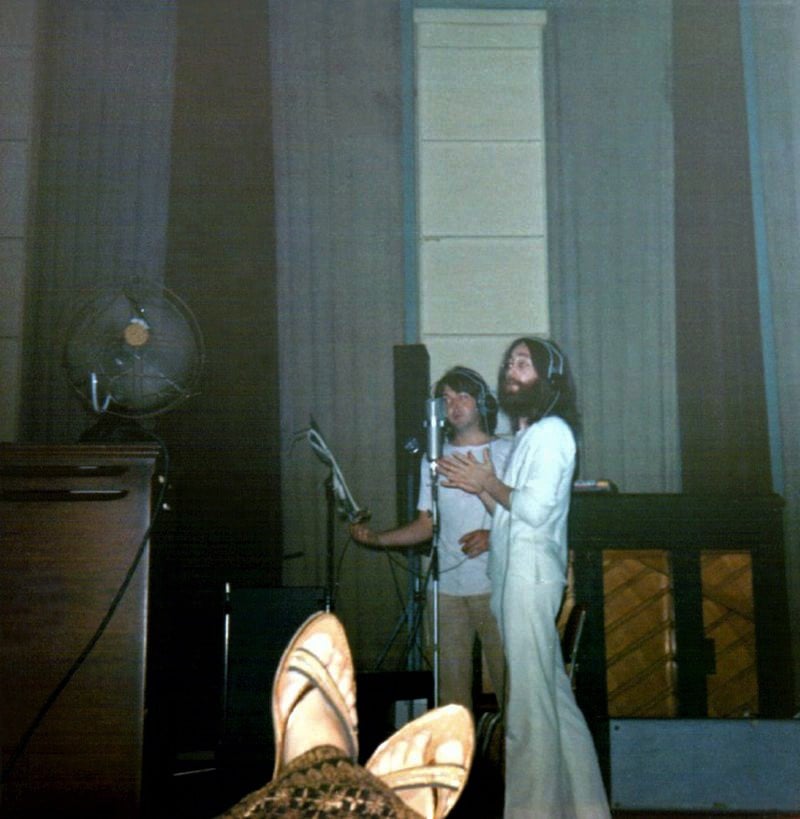
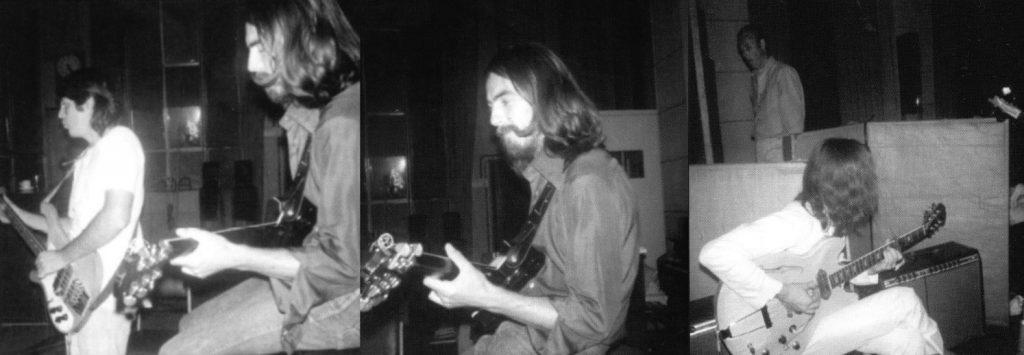


From sorting fan mail to seeing Abbey Road being made: my life as a teenage Beatles employee
On the afternoon of 23 July 1969, I was a nervous 18-year-old American on my way to EMI Recording Studios on Abbey Road in St John’s Wood. Inside, the Beatles were putting the finishing touches on the song Come Together, which would end up on Abbey Road. An endless stream of pilgrims would soon arrive at the pedestrian crossing on the cover, and the studios would be renamed to match.
As I entered, I heard voices and wailing guitars. Their assistant Mal Evans greeted me and put me at ease. John, Paul, George and Ringo were scattered around the studio. The place was bustling, with crew setting up, moving equipment and microphones, placing towels over the drum heads. Then came the introduction. The boys – as everyone seemed to refer to them – were reminded that I was from the New York office. They all smiled; I felt warmly welcomed. Then they got down to business. Not wanting to be intrusive, I took some candid photos; I was by no means a professional photographer, and this is the first time they’ve been published.
How did I get here? Two years earlier, I was a young fearless teen growing up in Queens, New York, who wanted to be Grace Slick of Jefferson Airplane. I had been to both Beatles concerts at Shea Stadium in 1965 and 1966, and was totally enamoured the minute their songs began playing on the radio and their now historic February 1964 appearance on The Ed Sullivan Show. Mine and so many other lives changed forever in that moment.
In high school, I heard the Beatles had an office in Manhattan. I took the subway to the office building in the heart of Times Square and took the elevator to the 18th floor. The sign on the door read Beatles (USA) Limited and Nemperor Artists, Ltd. I knocked and went inside. “Hi, are you here to be interviewed?” asked the woman at reception and I immediately said yes, having no idea what I would be interviewed for.
They were looking for teens to help sort the sacks of fan mail and hired me immediately. Each day after school I would hop on the subway and go to the office, and after graduating high school in 1968, they offered me a full-time job. I will never forget the excitement the day the demo of Back in the USSR arrived in the office before it was released – we were all so thrilled and played it immediately, over and over, blasting it out.
In July 1969, I paid to take a two-week vacation to London. I spent time in the Savile Row HQ of Apple Corps, with fans waiting outside for a glimpse of any Beatle that might pop in. I watched the moon landing on a small black and white TV at the office alongside Donovan.
Then Derek Taylor, the Beatles’ press officer and a great mentor to me, arranged for me to go to EMI Studios, and in I wandered. Bearded George, dressed in blue jeans and matching shirt sat atop the organ; John in all white, with beard and beads, sat in front of the drum kit area; Paul was dressed casually in a white T-shirt and barefoot, constantly moving around the studio, with Ringo in bright red trousers at his drums. George Martin was there too, checking just about everything.
As they began to rehearse sections of Come Together, Paul seemed to be taking the lead. At certain points he would stop, suggesting “it’s four beats, Ringo,” and walk over for a pow-wow: “All good.” Paul and George harmonised together as George worked on his wailing guitar solos. John ran his fingers along the neck of his guitar as he tuned up.
Paul was the most animated that day; John was rather quiet as he had recently returned to the studio following a car accident in Scotland. I brought some white flowers for him and he placed one on the amp next to him. George remained rather pensive, while Ringo had great patience and calm.
I continued to tiptoe around. Trying to take it all in, listen to what they were playing while being invisible. I made eye contact with John and Paul a few times. I remained cool and smiled. Time stood still.
It was time to leave. I waved goodbye and ventured out and down those famed steps. […]
Merle Frimark – From From sorting fan mail to seeing Abbey Road being made: my life as a teenage Beatles employee | The Beatles | The Guardian
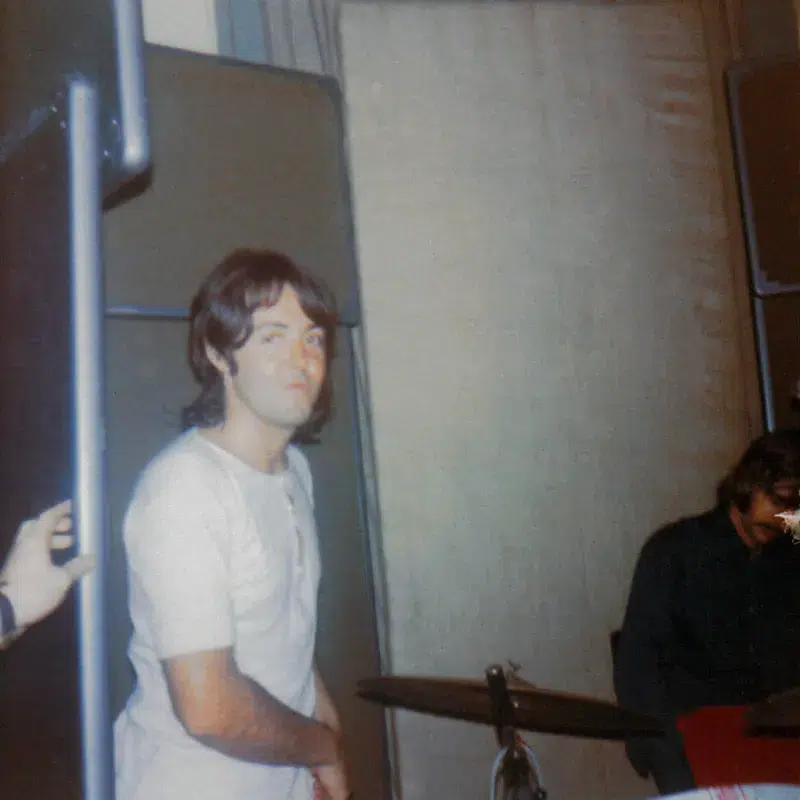
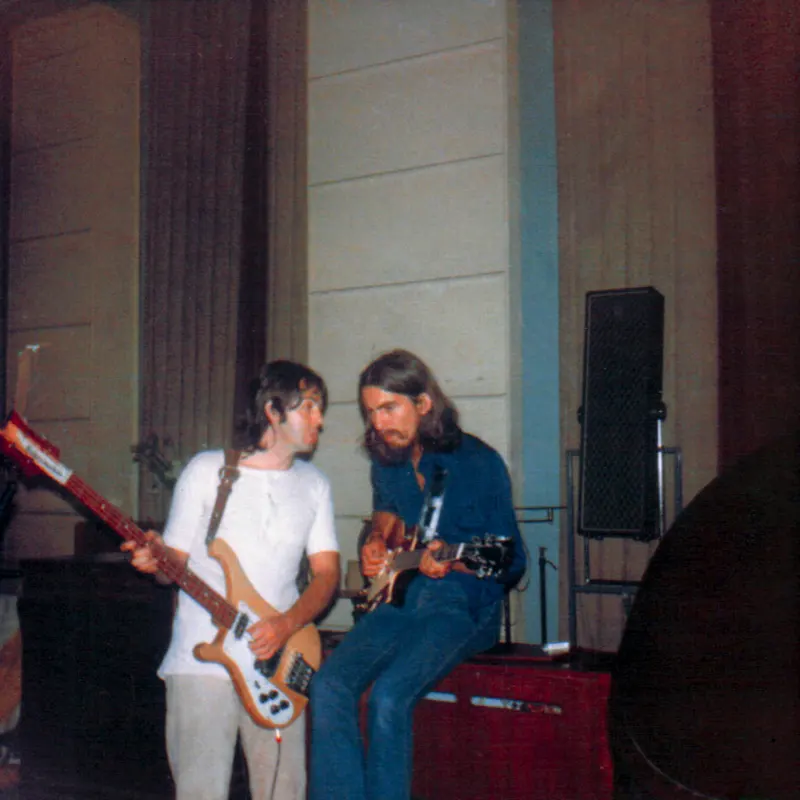
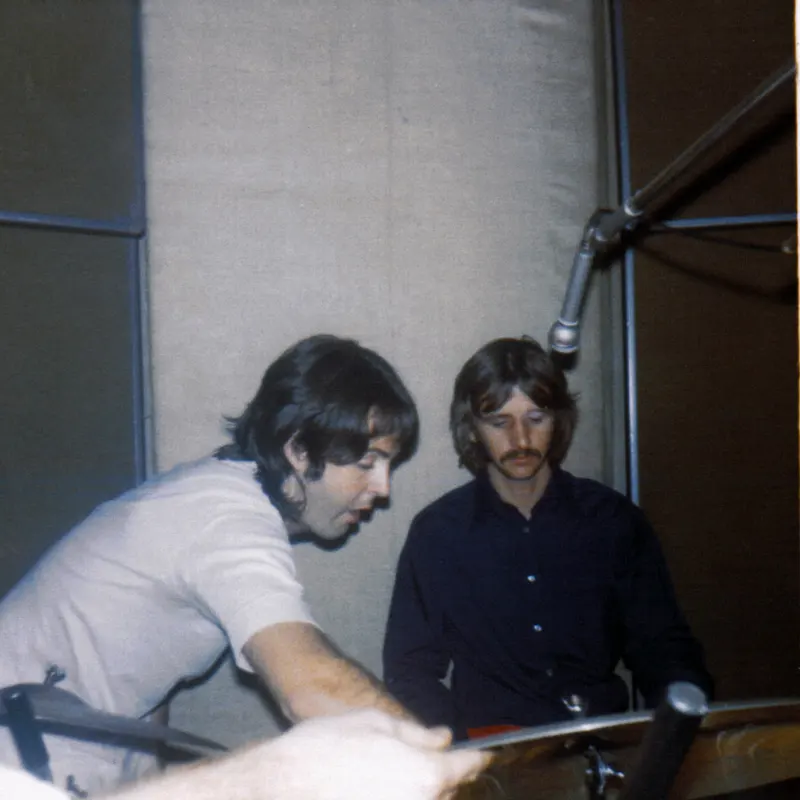
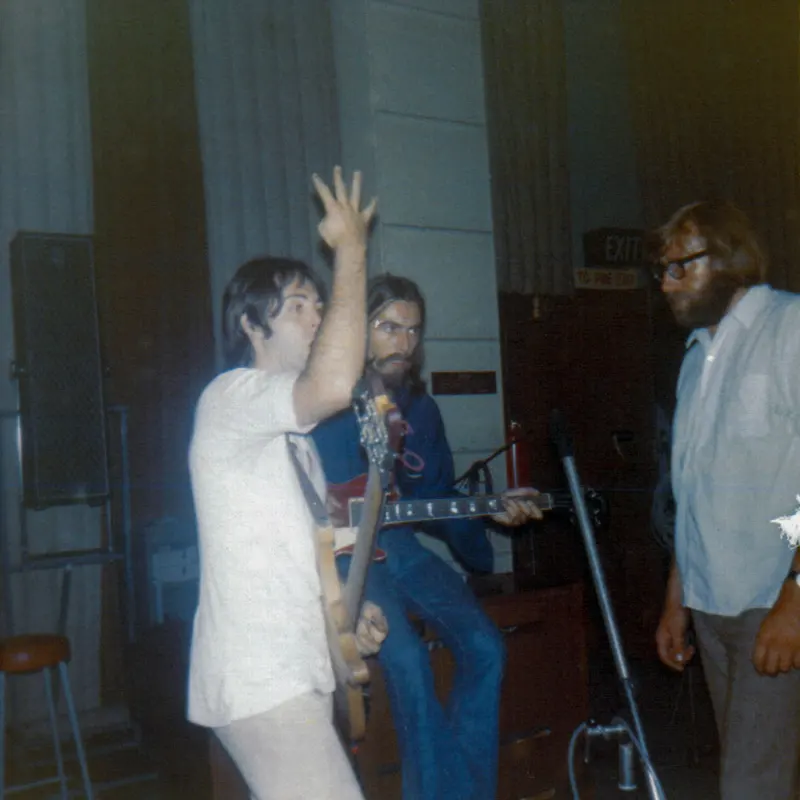
Recording • SI onto take 26
Recording • SI onto take 9
Recording • Take 1
Recording • Take 2
Recording • Take 3
AlbumOfficially released on Abbey Road (50th anniversary boxset)
Recording • Take 4
Recording • Take 5
Recording • Take 6
Recording • Take 7
Recording • SI onto Take 7
Written by Paul McCartney
Recording
The Complete Beatles Recording Sessions • Mark Lewisohn
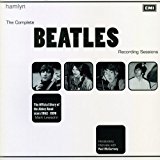
The definitive guide for every Beatles recording sessions from 1962 to 1970. We owe a lot to Mark Lewisohn for the creation of those session pages, but you really have to buy this book to get all the details - the number of takes for each song, who contributed what, a description of the context and how each session went, various photographies... And an introductory interview with Paul McCartney!
The Beatles Recording Reference Manual: Volume 5: Let It Be through Abbey Road (1969 - 1970)

The fifth and final book of this critically acclaimed series, "The Beatles Recording Reference Manual: Volume 5: Let It Be through Abbey Road (1969 - 1970)" follows The Beatles as they "get back to where they once belonged...". Not once, but twice. With "Let It Be", they attempted to recapture the spontaneity of their early years and recordings, while "Abbey Road" was a different kind of return - to the complexity, finish and polish that they had applied to their work beginning with "Revolver" and through to "The Beatles".
Solid State: The Story of "Abbey Road" and the End of the Beatles
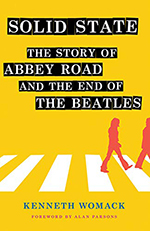
Acclaimed Beatles historian Kenneth Womack offers the most definitive account yet of the writing, recording, mixing, and reception of Abbey Road. In February 1969, the Beatles began working on what became their final album together. Abbey Road introduced a number of new techniques and technologies to the Beatles' sound, and included "Come Together," "Something," and "Here Comes the Sun," which all emerged as classics.
If we modestly consider the Paul McCartney Project to be the premier online resource for all things Paul McCartney, it is undeniable that The Beatles Bible stands as the definitive online site dedicated to the Beatles. While there is some overlap in content between the two sites, they differ significantly in their approach.

Notice any inaccuracies on this page? Have additional insights or ideas for new content? Or just want to share your thoughts? We value your feedback! Please use the form below to get in touch with us.